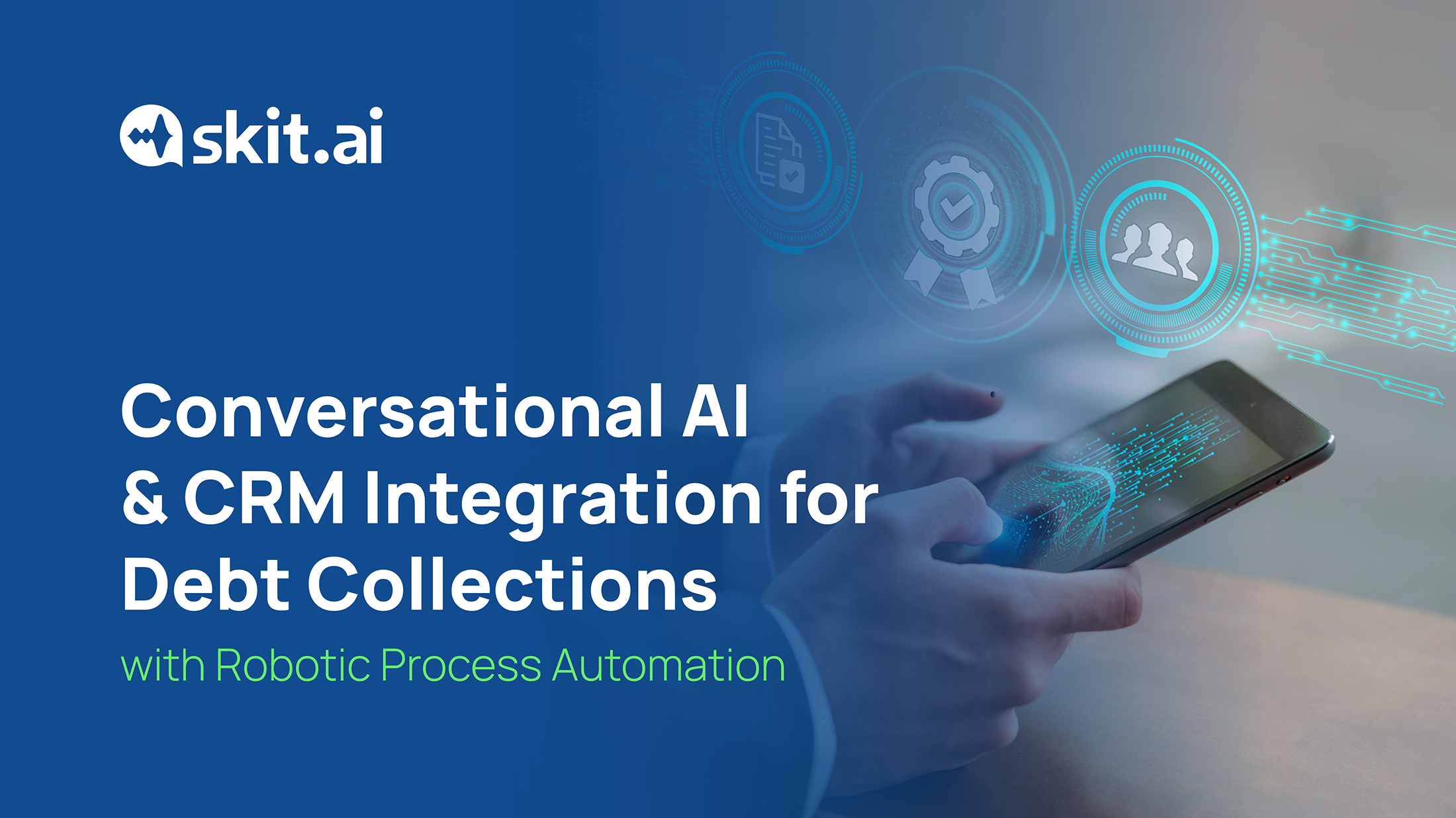Simone Somekh
June 24, 2024

Hello! Welcome to Skit.ai. Click here to book a demo.
June 24, 2024

When you adopt a Conversational AI solution for your collection business, one of the first challenges is getting it to exchange information with your company’s customer relationship management (CRM) platform. In this article, we’ll explain how you can integrate Skit.ai’s solution with your CRM system using a robotic process automation (RPA) approach. This method can save you time and money while requiring minimal technical expertise.
CRM software is essential to gather, organize, and manage your accounts’ information. The benefit of integrating your Conversational AI solution with your CRM system is to easily personalize calls and quickly fetch consumer data in order to achieve end-to-end automation.
Whether it’s an outbound call—and your bot is calling a consumer to collect payment—or an inbound call—in which a consumer may call to request information on their account—you’ll need the bot to have access to the data.

Collection agencies that want to adopt Conversational AI have a options to give the solution access to their CRM data.
To get access to CRM data, flat-file transfers and middleware are two ways to avoid a complex integration requiring building new APIs. It’s important to note that flat-file and middleware are not considered actual integrations.
SFTP Flat-File Transfer:
Middleware Approach:
API Integration:
Due to the disadvantages of each method, we’ve adopted an alternative approach to solving this challenge.
Robotic process automation (RPA) involves using bots to automate repetitive tasks and workflows by mimicking human actions to interact with systems and applications.
With RPA, the Conversational AI platform can automatically access a CRM without requiring an API setup. The collection business grants the bot access to the CRM platform and whitelists it to ensure that the server is recognized as secure. The RPA bot functions as a live agent, logging into the CRM system and interacting with it directly, without the need for integration.
This approach requires no IT effort on behalf of the collection business utilizing Conversational AI, resulting in significant cost savings.

An RPA bot with access to a collection agency’s CRM can do the following:
All this can be automated and executed without any human intervention.
The RPA method only works with cloud-based CRM platforms, such as Finvi, Collect!, and Debtrak. It does not work with on-premises CRMs, such as CollectOne, Debtmaster, Latitude, and Gcollect.

Curious to learn how Skit.ai can integrate with your existing CRM? Request a demo with one of our experts!
The field of AI is advancing rapidly, especially in large language models. Prominent models like GPT-3 and GPT-4 have impressive capabilities in generating coherent, human-like text. However, these models face a significant limitation: they rely solely on the data they were trained on, often leading to outdated or contextually incorrect information. As a result, the […]
You are ready to adopt a Conversational AI or Voice AI solution for your contact center, or you are in the process of adopting one—congratulations! Now is the time to think about integrations. In this article, we’ll discuss the benefits of integrating your Conversational AI platform with various tools and applications to transform your tech […]